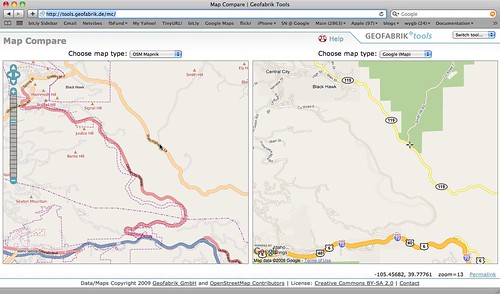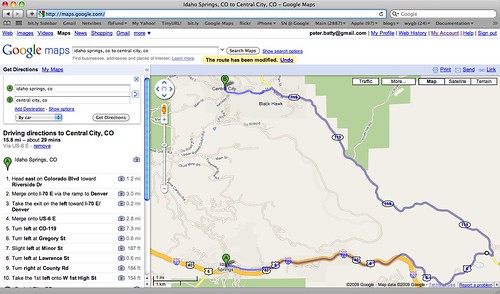I reported previously that I found that Google Maps was
missing Central City Parkway after their change in street data provider (they are now providing their own street data rather than using Tele Atlas). I reported the error to Google and said I would report back here when it was fixed - Google is aiming to fix errors within 30 days. This evening Tom Churchill commented on my
previous post to say that Central City Parkway was now present on the map - I thought it was odd that it had been fixed but I hadn't received an email to let me know, as promised. I reported the problem 17 days ago and received confirmation that it was an error and they would work on it 13 days ago.
Anyway, when I went to check out the updated map, this is what I saw (Google is on the right, OpenStreetMap on the left):

This compares to the previous comparison screenshot I did, which looks like this:

So there is now a road on the map that follows the path of Central City Parkway, when there wasn't before. But it's drawn as a minor road when it should be a major highway (a "divided highway" or "dual carriageway" depending on where you come from!), and it has no name shown on the map. And when I try to get Google Maps to route along it, it stubbornly refuses to do so, even if I try to drag the route to force it along there (when dragging, it doesn't allow me to drop on this street):

So anyway, we seem to have a curious semi-update - there's a new geometry there that wasn't there previously, along the route of Central City Parkway, but with no name, the wrong road classification, and you can't route along it. Seems odd that a partial update like this should find its way into the live database ... I guess the process is still slightly "beta" :O !! Will keep an eye on it and report back on further progress!



